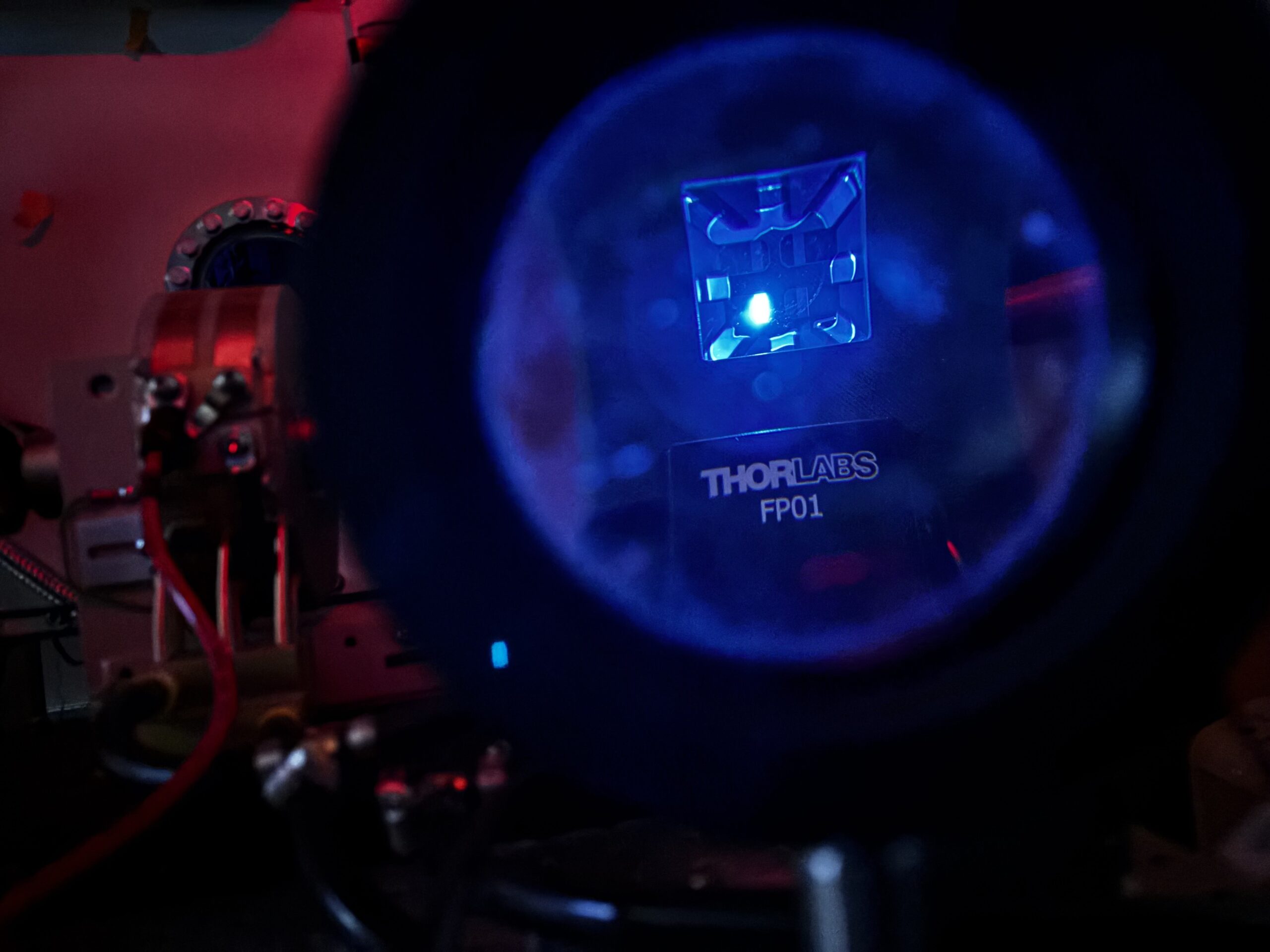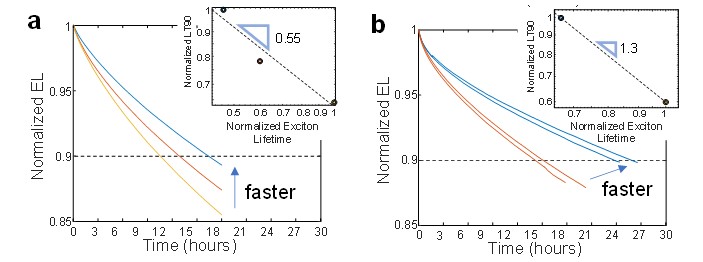Dark Triplet Excitons in Organic Light Emitting Devices

The relative instability of high efficiency blue Organic Light Emitting Devices (OLEDs) is one of the most important and longstanding challenges in the display industry. We address high efficiency phosphorescent blue OLEDs and employ a novel in-situ spectroscopy technique to better harness the stability improvements enabled by faster blue light extraction.
Increasing the speed of light extraction is one of the most promising pathways to realizing more stable phosphorescent blue OLEDs1. Implementations to date2,3, however, have not achieved the dramatic gains originally proposed. Conventional models of degradation emphasize the dynamics of emissive triplet excitons on phosphorescent molecules, neglecting the potential role of non-emissive, ‘dark’, triplet excitons on host and charge blocking molecules. By probing bright and dark triplet dynamics in-situ using surface plasmon polariton-coupled modulation and magnetic exciton annihilation modulation, respectively, we have determined that dark triplet excitons dominate both the instability and efficiency roll-off of a high-performance blue phosphorescent OLED.
We found that dissociating dark triplets improves the stability by 50%, reduces efficiency losses at high brightness by a factor of 2, and increases the impact of Purcell enhancement by a factor of almost 2.5. Our results confirm that stabilizing blue phosphorescent OLEDs will require in-situ characterization and deliberate strategies for the management of dark triplet excitons.

Figure 1. (a) Electroluminescence ageing for devices with dark triplets operated at a constant current density of 5 mA/cm2. Lifetimes to reach 90% of initial brightness (LT90) obtained for the simple host devices are 16.5 h, 12.9 h, and 10.6 h for the fast, medium, and slow devices, respectively. Inset: the power law relationship between LT90 and bright exciton lifetime yields a slope 0.55, much smaller than observed in photoluminescent studies. (b) The exciplex host with fewer dark triplets shows improved stability with LT90’s of 24.9 h and 14.9 h for the fast and the slow devices, respectively. Inset: the simple host exhibits a power law slope of 1.3, significantly larger than observed for the simple host device. From Tiepelt, et al.
Relevant Publications:
1 Ha, D.-G., Tiepelt, J., Fusella, M. A., Weaver, M. S., Brown, J. J., Einzinger, M., Sherrott, M. C., Van Voorhis, T., Thompson, N. J. & Baldo, M. A. Dominance of Exciton Lifetime in the Stability of Phosphorescent Dyes. Advanced Optical Materials 7, 1901048 (2019). https://doi.org:https://doi.org/10.1002/adom.201901048
2 Fusella, M. A., Saramak, R., Bushati, R., Menon, V. M., Weaver, M. S., Thompson, N. J. & Brown, J. J. Plasmonic enhancement of stability and brightness in organic light-emitting devices. Nature 585, 379-382 (2020). https://doi.org:10.1038/s41586-020-2684-z
3 Zhao, H., Arneson, C. E., Fan, D. & Forrest, S. R. Stable blue phosphorescent organic LEDs that use polariton-enhanced Purcell effects. Nature 626, 300-305 (2024). https://doi.org:10.1038/s41586-023-06976-8
